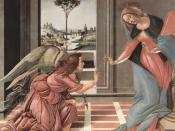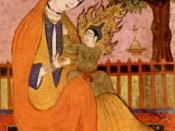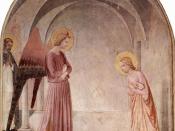Religion is not something we can see, but is an organised collection of beliefs, cultural systems, and world views that relate to humanity to an order of existence (Wikipedia, Religion, www.wikipedia.org/wiki/Religion). As individuals we are able to put our faith in and adhere to a way of life, supported by the information passed to us by different generations and leaders of religion.
Defining religion is difficult. As individuals we use our own views and experiences to emphasize different things. Ninian Smart, Professor of comparative Religions is known for his seven-part dimension model of religion. (http://news.bbc.co.uk/dna/place-lancashire/plain/A19645167)
This model is a diverse structure that allows us to break each religion into definable aspects and view their characteristics. When studying religion, we can then use them to understand beliefs and support learning of religious frameworks.
One of the dimensions in Ninian Smarts model is The Narrative or Mythic dimension (The Open University, Introduction, Pg No 28).
This dimension refers to past records and stories that maintain and support a tradition in the practice of religion. It can be argued that myths are non-factual information, however there is no implication that a myth is false (The Open University, Introduction, Pg No 28). These vital stories are either spoken or written accounts of created or historical events that can be exaggerated or idealised. An example of a created story is that of Ganesh, the Hindu pantheon of Gods and who is the most recognised of the Hindu Gods outside India. (www.kashgar.co.au/articles/ganesh). There are a large number of myths and stories about Ganesh and how he is recognised, with the most known to be his elephant head.
"The elephant head symbolised unmatched wisdom and the gaining or knowledge
Through reflection and listening"
(www.kashgar.co.au/articles/ganesh)
This dimension is often integrated and supported by the ritual dimension,


